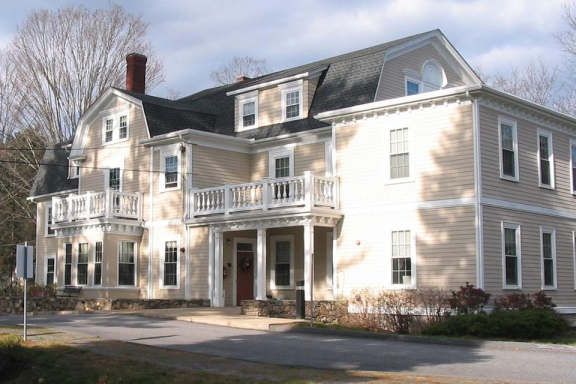Get Help
If you or a loved one needs help now, our caring staff are available. Reach out today.
Make a Referral
Complete our referral form for a person you support or family member in need of services
Sign Up for Our Mailing List
FRAMINGHAM — The chapel at Edgell Grove Cemetery, a marker honoring Framingham’s first minister and three homes that date to the 19th century will be honored at a ceremony recognizing historic preservation.
The Framingham Historical Commission recently announced the recipients of its 2017 Preservation Achievement Awards. Timed to coincide with national historic preservation month, the award recognizes work to preserve and promote important pieces of Framingham’s history.
This year’s awards ceremony will be held May 25 at 7 p.m. inside Edgell Grove Cemetery Chapel, one of the five projects being recognized for preservation efforts. Below is more information on each of the sites. Information was provided by the Framingham Historical Commission.
Edgell Grove Cemetery Chapel: Constructed in 1885 with a bequest from prominent Framingham resident Colonel Moses Edgell, the Edgell Grove Cemetery Chapel was designed in the Richardsonian Romanesque style by architect Frank Hurd. With funding from Charles Long, the Edgell Grove Cemetery Trustees undertook a major campaign to repair and restore the building in 2011. Exterior work included repairing mortar joints in the stonework, clear coating and waterproofing the building and fixing the roof flashing and gutters. Inside, work included repairs to ceiling joists, light fixtures and the fireplace and chimney.
Rev. John Swift House Marker, 129 Maple St.: Hidden on a small plot of land in a residential neighborhood stands a granite marker denoting the location of the house of Framingham’s first minister, the Rev. John Swift, who lived from 1678-1745. The Framingham Historical and Natural History Society (now the Framingham History Center) placed a marker on the site in 1911. The marker provides an overview of Swift’s life, including his 44 years of service as Framingham’s first settled minister. In recent years the marker suffered from a lack of care, with the site becoming overgrown and the marker itself in poor condition. In 2016, the Framingham chapter of the Daughters of the American Revolution undertook a project to clean the site of overgrowth, landscape it and repair the marker. The stone and bronze tablet were cleaned and the tablet was reset on the stone.
John Johnson House, 660 Pleasant St.: Constructed around 1870, the house was owned by John and Polly (Hemenway) Johnson. The family lived in the building through the end of the 19th century, when it became part of a large gentleman’s farm. The farm was broken up in the middle of the 20th century and faced demolition by 2004. The Italianate and Colonial Revival style house was in poor condition, and stood on a large lot that looked ripe for a small subdivision. Because the house was more than 75 years old, it was subject to the town’s demolition delay bylaw. The Historical Commission voted to impose a six-month delay on the demolition of the building, allowing them time to work with property owner Francis Miele to save the building. Miele subdivided the property, creating two new lots while preserving the historic house and covered entrance. He sold the house to Mark and Carol Seto, who have worked to rehabilitate the building.
Dr. Peter Parker House, 613 Salem End Road: Parker, one of the town’s most notable residents, lived from 1804 to 1888. He spent 23 years in China, working first as a missionary and later as a diplomat. Parker and his wife, Harriet Webster Parker, built the house in the late 1860s to serve as their summer residence. The house was constructed on the site of the Parker family homestead, where Parker had been born. The Italianate style building suffered from inappropriate alterations in the middle of the 20th century, including the removal of a large tower. In 2007 and 2008, owners Thomas Schuetz and Joan Petracca worked with architect Gerald Couto to restore the building. They removed siding and later additions, using historic photographs of the house to restore features such as the window placement, trim and porches.
Charles Russell Train House, Grove Street: Constructed in the late 1850s, the Charles Russell Train was adapted to the Colonial Revival style in the 1890s after a fire in the building. The house was converted to a nursing home in 1950, with several alterations to the exterior. After Advocates, Inc. purchased the building in 2003, they completed a major rehabilitation that sensitively restored the building’s appearance while allowing them to continue its use as a group home. Although the surrounding area on the Centre Common was established as Framingham’s first local historic district in 1978, the Charles Russell Train House was not included in the district at that time. However in 2006 Advocates, Inc. voluntarily brought their plans before the Historic District Commission, which approved of the work. The property was added to the Centre Common Historic District in 2008.
